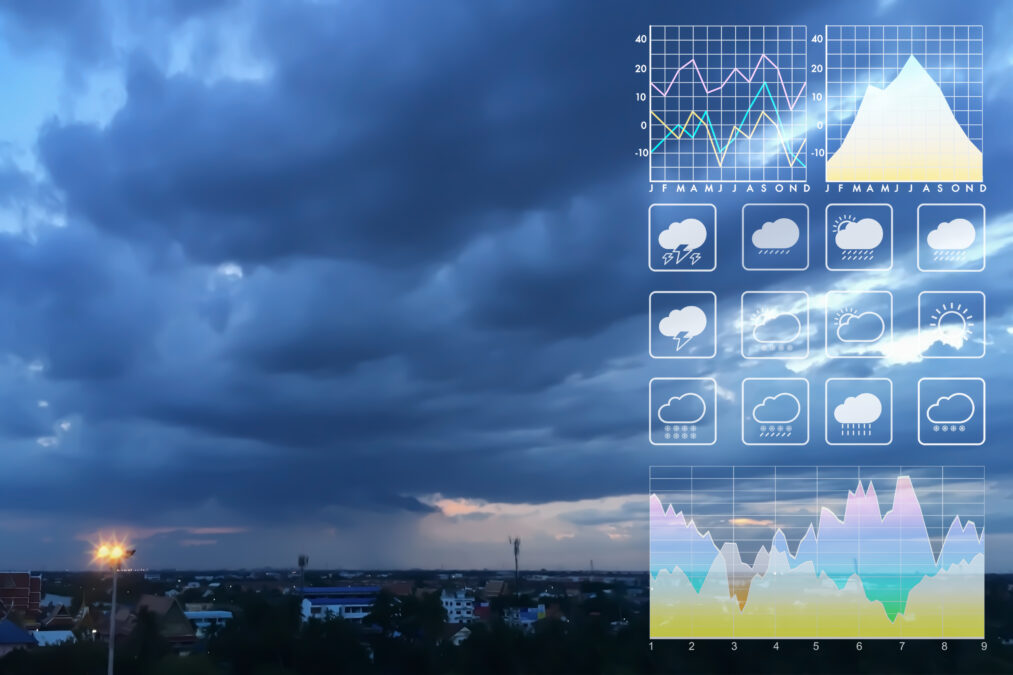World leaders and global corporations have pledged their support for initiatives that will help to address climate change and realise the goal of a net zero future. Their support is encouraging, because climate action needs to happen now. This sense of urgency is compounded by the growing number of extreme weather events that are increasingly blighting the planet and the people living on it, depriving them of their homes, their livelihoods and, in the worst case scenarios, even their lives. The roll call of these extreme weather disasters gets longer each year and 2021 was no exception, ranging from the devastation caused across America to the flash floods that destroyed lives in parts of Germany, France and Belgium, collapsing buildings, historical artefacts, roads and core infrastructure.
While it is naïve to think that there is a ‘silver bullet’ that can halt future extreme weather events, we should consider the positive role that ‘Tech for Change’ can have on industries providing essential services – ranging from farming to freight, logistics and energy providers – that are often the first to be impacted by changes in the weather. For each of them, access to timely and accurate weather information has different implications. For instance, for farmers and those organisations invested in agriculture, precise weather forecasts can minimise the potential damage to crops and livestock; for transport, shipping, freight and couriers, better weather information means that they can schedule less problematic routes on rainy or stormy days to prevent delivery disruptions, while photovoltaic power stations can use weather predictions to better prepare their electricity trading plans. In fact, for energy companies, their problems are compounded during extreme weather events when energy becomes a scarce commodity. Good knowledge provided by up-to-date weather forecasts enables them to make informed decisions as to when to produce or procure energy at the right time and at the right price point, so they have enough provision for their customers during extreme weather events.
‘Tech for Change’ – underpinned by Artificial Intelligence (Al) – is now coming to the aid of those industries’ day-to-day weather woes. Today, AI is being used to power a short term Weather Forecasting Platform which is capable of accurately predicting short-term weather conditions up to six hours in advance, providing an early heads up about forthcoming weather patterns. This enables companies whose plans are often dictated by the status of the weather to prepare in advance, according to the anticipated conditions.
How an as-a-service model lends itself to achieving climate change goals
Already in use in China, such a platform with the aid of AI brings multiple benefits to users across all sectors dependent on timely and accurate forecasts, helping frontline organisations respond to climate change. Those in the agriculture, logistics, transportation and renewable energy sectors can benefit from its ability to track weather events ranging from the ‘ordinary’ – like rainfall and wind speed – as well as more severe weather conditions that may have a dramatic impact on their operations. In a similar scenario, grape farmers in Wuhan, China are using an Internet of Things (IoT) based application to analyse data from the surrounding environment – including soil, humidity and sunlight – to better plan their water and fertiliser management.
Underpinning the AI-based forecast platform, is a convolutional neural network (CNN) model. This extracts features from radar reflectivity and meteorological satellite images. This is supported by a trained machine-learning model, which is capable of performing highly accurate and close-to-real-time local weather forecasting in minutes. Meanwhile, a generative adversarial network (GAN) works to generate forecast images with exceptional clarity and detail. One of the benefits of this AI-based prediction model, is that it outperforms the traditional physics-based model; for example, the Global/Regional Assimilation and PrEdiction System (GRAPES) requires hours to generate forecasting data, which is far behind the pace needed for organisations that need to make near real-time decisions based on anticipated weather events.
Some of the data is conveyed via high-resolution imagery with one-kilometre grid spacing, with updates every 10 minutes providing fresh insights, enabling real-time decisions to be made to plans or arrangements based on unfolding or predicted weather events. The data is displayed on a zoomable map, while in other applications, the forecast data can be accessed via an API.
Tech based on AI, and related innovations, are already helping to solve some of the operational challenges for industries brought by climate change, which require actionable, climate-related insights to support their daily operations. It can play a significant role in providing assurance that essential businesses can remain operational, stable and sustainable, while suffering as little interruption as possible from our ever-changing weather patterns.
Written by Rong Jin, head of machine intelligence lab at Alibaba DAMO Academy







